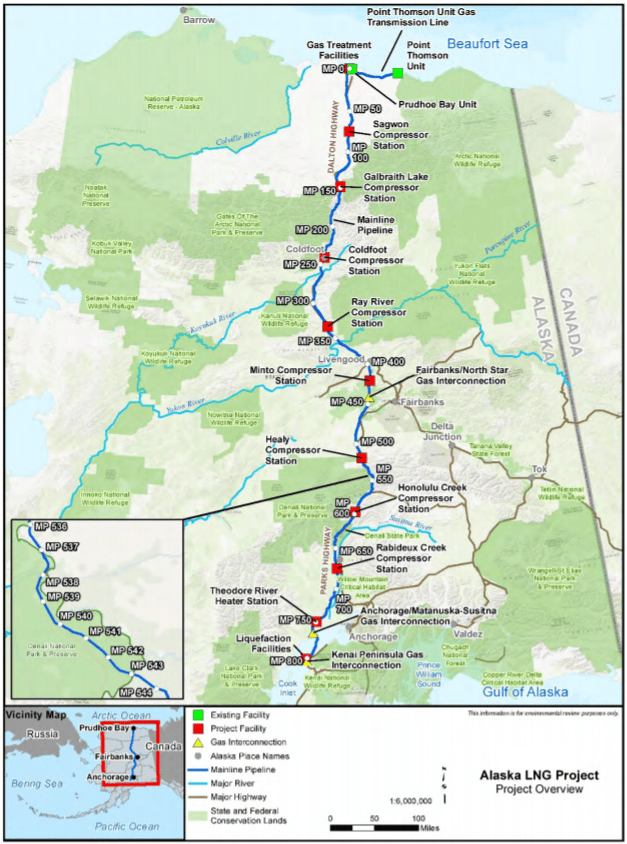Alaska LNG Project Wins FERC Approval

The Federal Energy Regulatory Commission on May 21 authorized the Alaska LNG Project, which includes an 800-mile pipeline and a liquefied natural gas export facility. The $40-$45 billion project, developed by Alaska Gasline Development Corp. in partnership with BP and ExxonMobil, is expected to be the largest in the U.S.
Democratic Commissioner Richard Glick dissented from the order, saying that it violates the Natural Gas Act and National Environmental Policy Act. Glick noted that the commission’s “public interest analysis does not adequately wrestle with the project’s adverse environmental impacts.” Further, Glick pointed that the commission “steadfastly refuses” to assess whether the impact of the project’s emissions contribute to climate change despite quantifying the direct emissions caused by the construction and operation. This refusal, according to Glick, allows the agency “to perfunctorily conclude that the environmental impacts associated with the project are acceptable.”
U.S. Senator. Lisa Murkowski, R-Alaska, commended the approval, calling it a “capstone moment for Alaska LNG at the federal level,” noting that the facility represents the nation’s largest energy infrastructure project in planning and permitting.
The project would be able to deliver up to 3.9 billion cubic feet of gas per day from gas treatment to the liquefaction facilities. The integrated pipeline project consists of a treatment facility on the North Slope, multiple offtake points for in-state residential and commercial use, and a liquefaction facility on the Kenai Peninsula.
FERC’s approval culminates six years of public input, engineering, environmental research, and cultural resource studies, according to AGDC, the independent public corporation which is responsible for the siting, construction, and operation of the project.
Much of the liquefied natural gas will be exported to an international market with approval. The U.S. Department of Energy has authorized the project to export 20 million metric tons per annum (MMTPA) of LNG to nations with which the U.S. has a free trade agreement (FTA) and another 20 MMTPA to non-FTA countries.
EnerKnol Pulses like this one are powered by the EnerKnol Platform—the first comprehensive database for real-time energy policy tracking. Sign up for a free trial below for access to key regulatory data and deep industry insights across the energy spectrum.
ACCESS FREE TRIAL